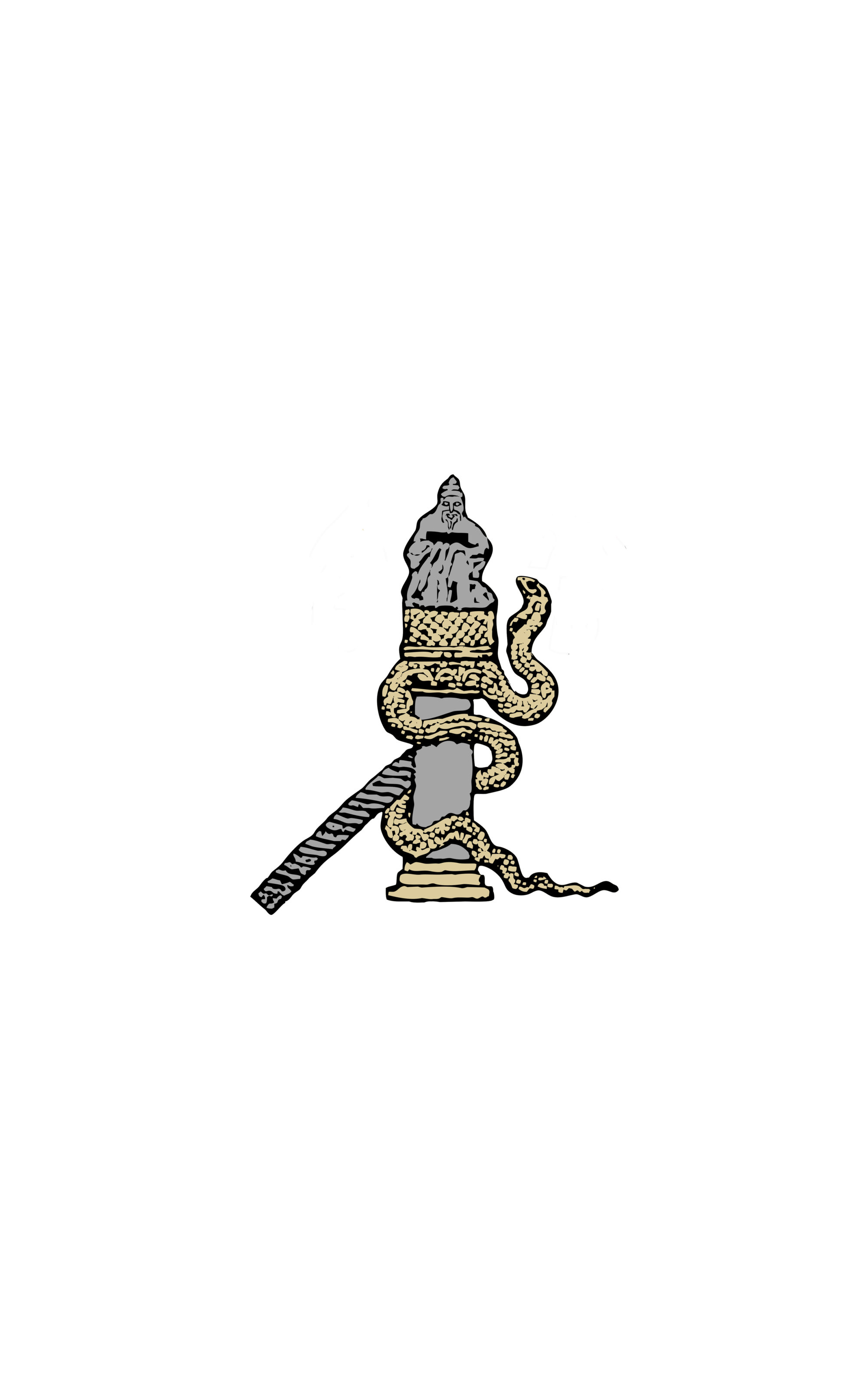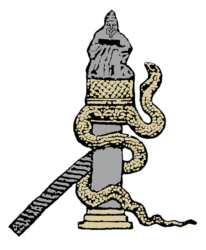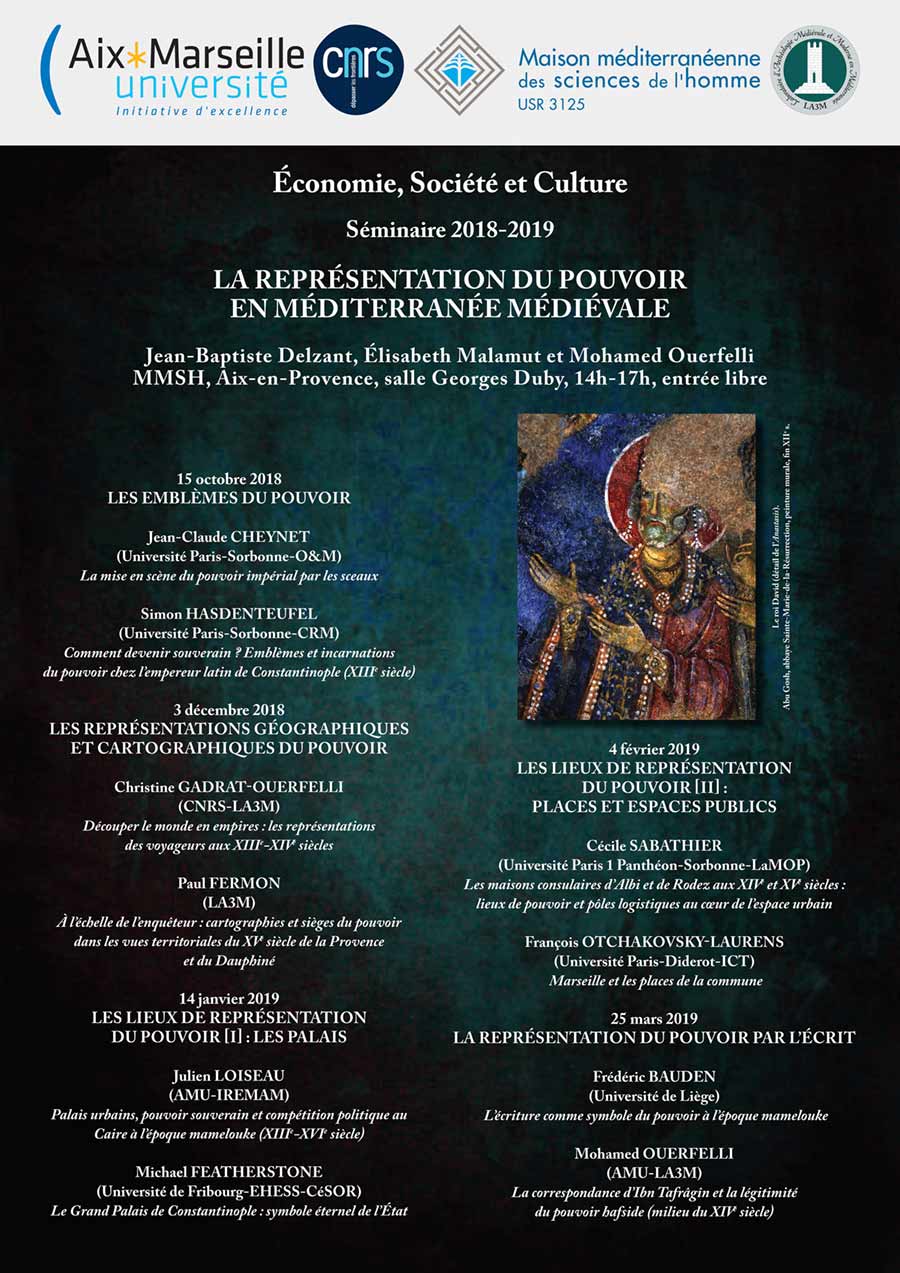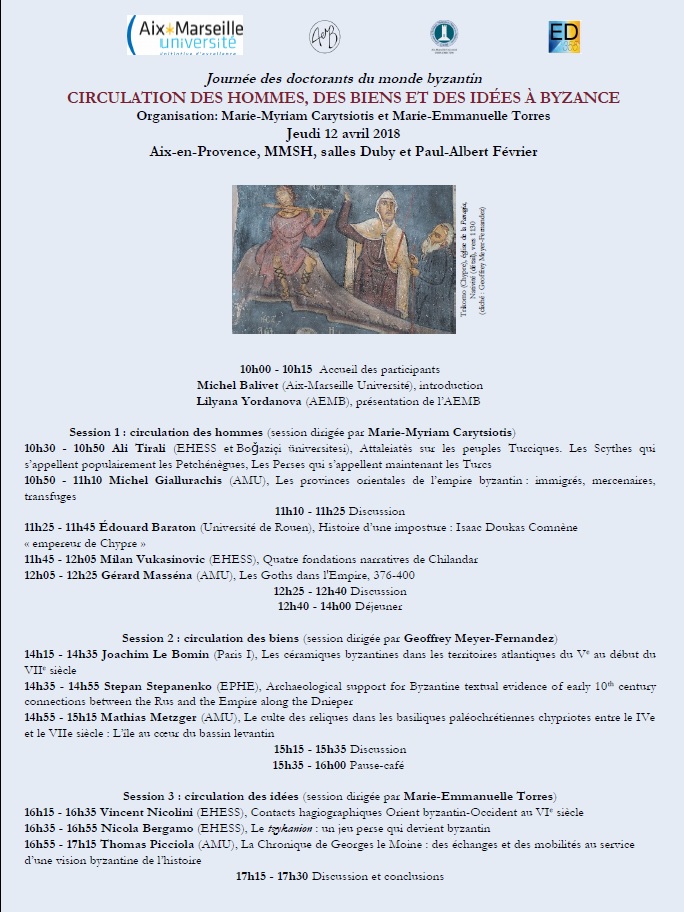IXème édition des Rencontres internationales des doctorants en études byzantines
7-8 octobre 2016
Institut national d’Histoire de l’Art
Maison de la Recherche, Université Paris Sorbonne
Programme
Vendredi 7 octobre
9h Accueil
Session 1 : Droit, histoire sociale et polique à l’époque médio-byzantine
9h30 Chrysavgi Athanasiou (Université Paris-Sorbonne), Les innovations et les nouveautés juridiques de Léon VI le Sage dans la collection des 113 novelles
10h Jacques Beauseroy (Université Paris-Sorbonne), L’usage des sources juridiques pour l’histoire sociale de Byzance : l’exemple de la Peira (début du XIe siècle)
10h30 Numa Buchs (Université Paris-Sorbonne), La bataille de Kapétrou : un « Mantzikert » avant l’heure ?
11h-11h30 Pause café
Session 2 : Aristocratie, structures et représentations
11h30 Márton Rózsa (Eötvös Loránd University, Buda-pest) Sealed Image: Five Metrical Seals of the Byzantine Second-Tier Elite in the 12th century
12h Benoît Cantet (Université Paris 1 Panthéon-Sorbonne), Se peindre et se faire voir : étude préliminaire à l’autoreprésentation aristocratique à Byzance
12h30 Anna Adashinskaya (Central European University, Budapest), Between Memory and Inheritance: Appearance of Children in Votive Compositions and Social Changes in Balkan Late-Medieval Societies
13h Pause déjeuner
Après-midi : visite au musée de Cluny
Samedi 8 octobre
9h30 Accueil
Session 3 : Echanges culturels
10h Valentina De Pasca (Università degli Studi di Milano), A New Context and a New Function for a Carved Ivory Pyx
10h30 Silvia Leggio (Sapienza University of Rome), The Genoese in Constantinople: Some Carved Marble Slabs from the Walls of Galata
11h-11h30 Pause café en salle Aby Warburg
11h30 Maria Alessia Rossi (The Courtauld Institute of Art, University of London), Competing Identities? Byzantine and Serbian Artistic Production in the 14th Century
12h Sima Meziridou (University of Heidelberg), The Byzan-tine View on the Upcoming Ottoman Threat: the Case of Trebizond
12h30-14h Pause déjeuner
Session 4 : Espace religieux, espace urbain
14h Lucia Orlandi (Université Paris-Sorbonne, Univer-sité de Bologne), Le baptême et les baptistères dans l’Empire romain d’Orient. Aspects culturels et sociaux (IVe-VIIe siècles)
14h30 Aurélie Terrier (Université Lyon 2, Unige Genève), A la recherche de l’Akerentia byzantine
15h-15h30 – Pause Café
Session 5 : Spiritualité, pouvoir et mysticisme
15h30 Adrian Pirtea (Freie Universität Berlin), The Doctrine of Spiritual Senses in Eastern Syriac Christianity: Its Foundations in Late Antique Alexandria and Its Influence on Byzantine Mysticism
16h Stefanos Dimitriadis (WWU Münster), Factors of Imperial Decision-Making Before the Fourth Crusade : the Role of the Supernatural
16h30 Rafca Nasr (Université de Poitiers, Université Libanaise), Le décor peint des églises du Liban. Les images de théophanies presbytérales à la lumière de la liturgie
17h Santiago Francisco Peña (Université Paris-Sorbonne, Universidad de Buenos Aires), Michel Psellos et la France des humanistes. Pierre de Ronsard et les démons byzantins
Livret des IXèmes Rencontres
Comité d’organisation
Jacques Beauseroy
Benoit Cantet
Elisa Galardi
Aikaterini Peppa
Jack Roskilly
Milan Vukašinović
Lilyana Yordanova



